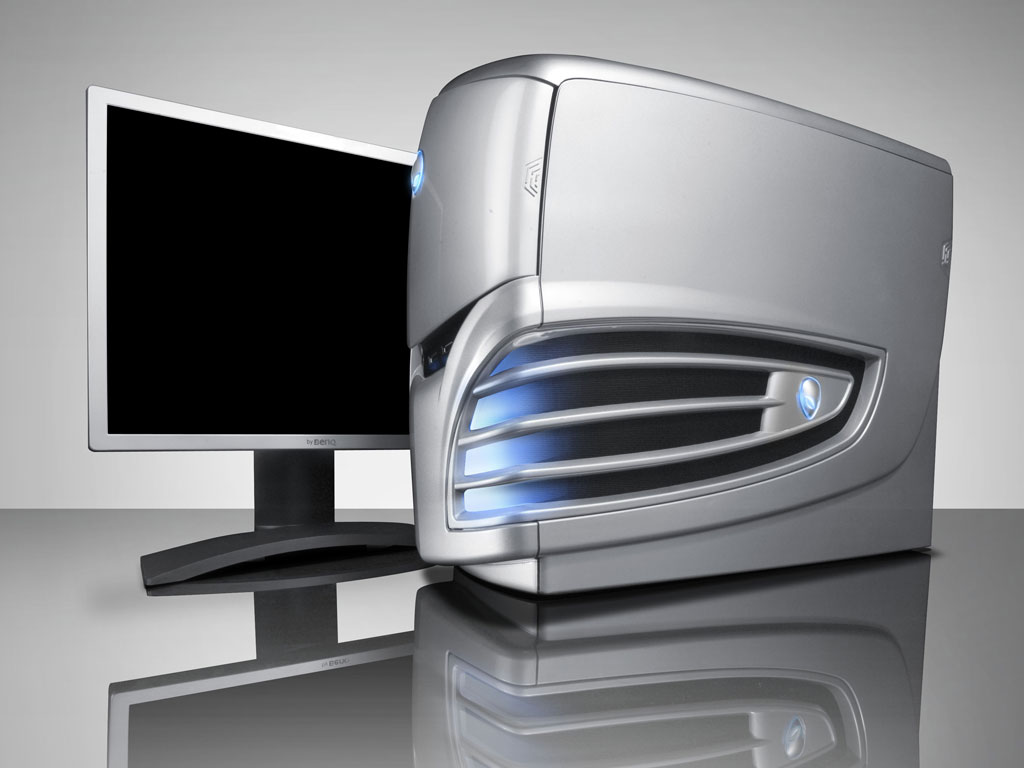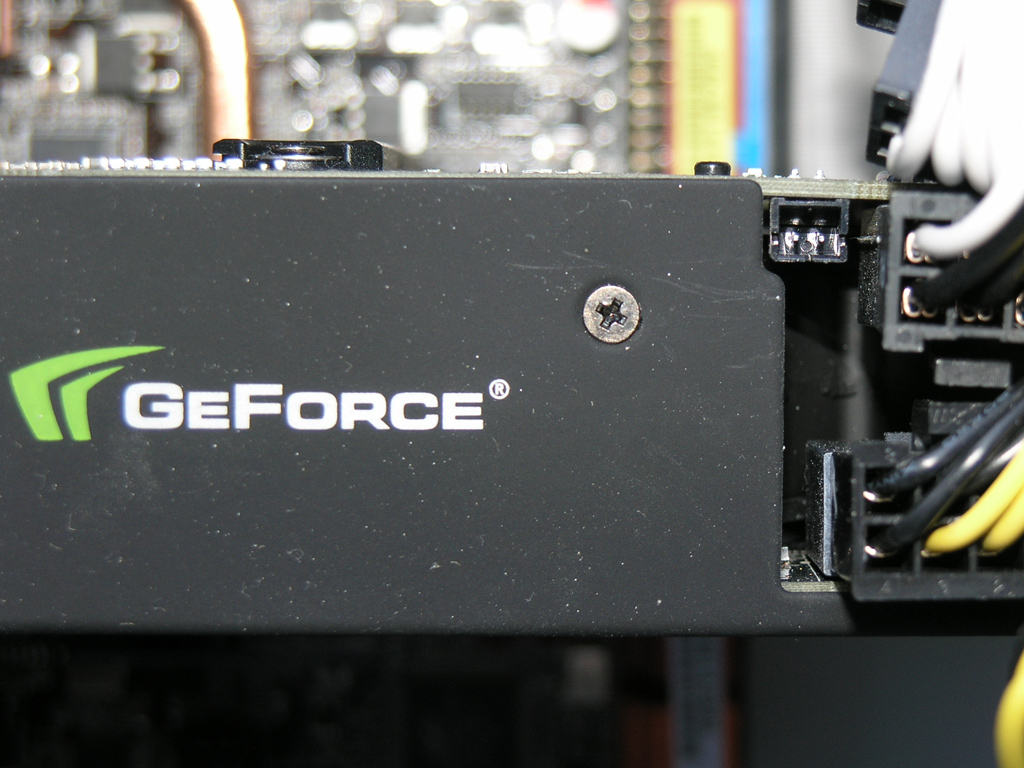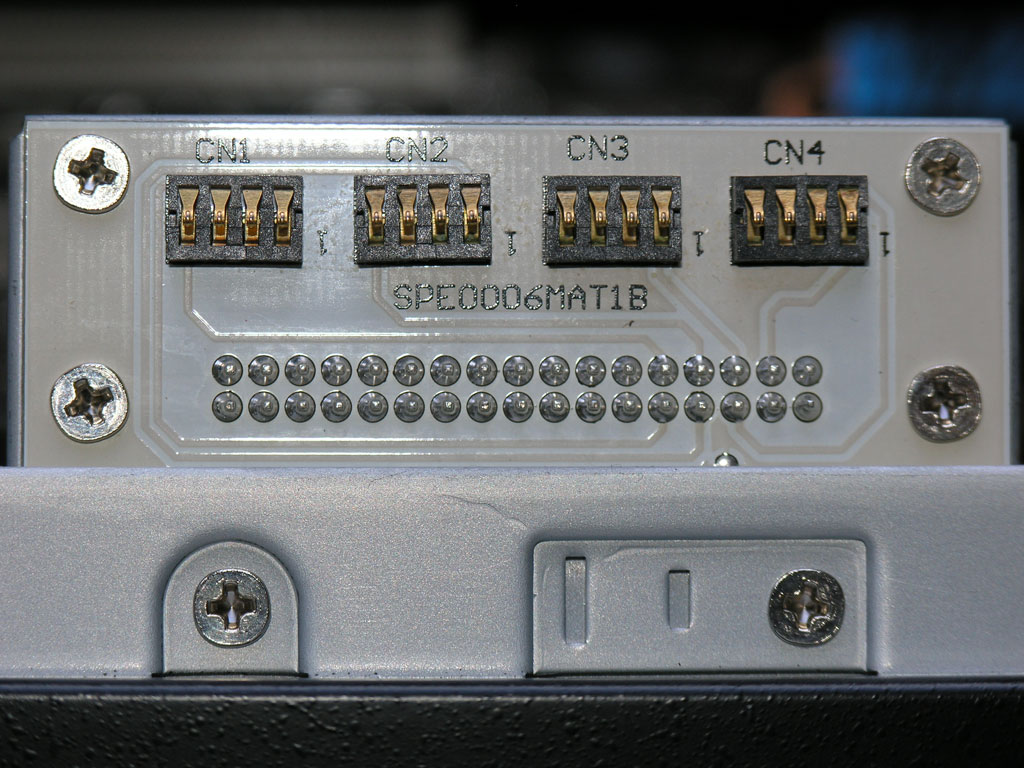Three Core i7 Systems From Boutique Builders
Alienware Area-51 X-58
There was a saying back in the day when PCs were purchased mostly by corporations and the first IBM PC-compatible “clones” were entering the market: “No one ever got fired for buying an IBM.” These days, you could “No one ever got laughed at for buying an Alienware.” The company has a strong and well-deserved reputation for building premium-quality computers. And given the manufacturer’s distinctively other-worldly enclosures, no one will ever ask you what brand you bought.
Alienware was the only one of the three systems in this roundup that chose a conventional heatsink and fan to cool the CPU, but since they also didn’t overclock the CPU, they didn’t need to crank the fan speed up to speeds that would result in objectionable noise. The X-58 was slightly louder than the AVADirect, but it was considerably quieter than CyberPower’s rig.
Processor and Motherboard
Asus builds the Intel X58-powered motherboard that Alienware uses for the Area-51 X-58; but without any other labels to guide us, we assumed it was a custom job. When we launched CPU-Z, however, the software utility identified the board as the very same P6T Deluxe that AVADirect and CyberPower rely on.
Alienware plugged an Intel Core i7 920 in its socket and set it to run at 2.67 GHz. This left the Alienware at a considerable disadvantage in our productivity benchmarks compared to the overclocked AVADirect and CyberPower systems. Gaming was a very different story, but we’ll get to that in a moment.
Like the more conventional Asus motherboards in this roundup, Alienware’s supports both AMD’s CrossFireX and Nvidia’s SLI, so you won’t be limited in your choice of GPUs should you decide to upgrade down the road. As with the other motherboard the other two manufacturers chose, this one features six DIMM slots to support the Core i7’s triple-channel memory architecture. Alienware populated three of these with 2 GB sticks of Elipida memory running at 1,066 MT/s. There are two Marvell Yukon 88E8056 Gigabit Ethernet ports onboard.
Graphics
Get Tom's Hardware's best news and in-depth reviews, straight to your inbox.
We have to confess to something of a screw-up on our part that gave Alienware an advantage in gaming benchmarks: The company originally sent us a machine equipped with a single ATI Radeon HD 4870 X2 card; but this was the last system that we benchmarked, and when we finally got around to it, we encountered a problem forced us to return the rig to the manufacturer. Before sending a replacement, Alienware asked if they could swap the 4870 X2 with Nvidia’s brand-new GeForce GTX 295. “No problem,” we replied, “as long as the change doesn’t put the price of the machine over our $2,500 limit.”
D’oh! We should have realized that we’d just given Alienware a leg up in this roundup: We gave them an opportunity to use a videocard option that wasn’t available when their competitors built their machines. This was entirely our fault; Alienware was completely up front about what they were doing. And as it turns out, it didn’t make a tremendous difference in our bottom-line opinion anyway.
Like the Radeon HD 4870 X2, the GeForce GTX 295 allows you to put two GPUs and two frame buffers in a single PCI Express 2.0 slot. But the GTX 295’s GPUs are mounted on two separated circuit boards that are then bolted together with an internal SLI cable connecting the two. The GTX 295 offers a combined total of 480 stream processors with a 448-bit interface to 896 MB of GDDR3 memory (for each GPU, so the card has a total of 1,792 MB of memory onboard). The GPUs and memory in Alienware’s rig came set to run at Nvidia’s stock clock speeds of 576- and 999 MHz, respectively.
Storage and Optical
Alienware installed the 64-bit version of Windows Vista Home Premium on a pair of Seagate 500 GB drives (model 35600620AS) in RAID 0. These drives spin at 7,200 RPM and they’re the only mass storage that’s provided. There are two 3.5-inch drive bays available for additional drives; the hard drive cage is cooled by a fan mounted on the right side of the chassis.
There’s an LG Super-Multi DVD burner (model GH22NP20) in one of the externally accessible 5.25-inch drive bays, which are hidden by a non-removable swinging door. If you want to watch HD movies, you’ll need to provide your own Blu-ray drive (or spend another $150 to buy one preconfigured). The X-58 didn’t come with a flash-memory reader, so you’ll need to plug your digital camera directly into the computer to offload your photos. There are two available 5.25-inch drive bays in front if you want to add anything down the road.
Enclosure
Alienware produces the curvaceous lines of its cases by layering a plastic exoskeleton on top of a more conventional steel chassis. The results are distinctively beautiful, but remarkably heavy. However, there are two features we’d like to see in more mainstream cases: first, you can remove the side panels by simply squeezing a lever—there aren’t even any thumbscrews to deal with. Second, the fan mounted on the left side panel—the one you’ll remove most often—is powered by a row of electrical contacts; there are no wires strung between it and the motherboard or power supply. Ed.: We saw this same sort of innovation on Thermaltake's Spedo in our most recent full tower roundup and thought the feature was great.
Alienware’s 750-watt power supply, which is certified by both AMD and Nvidia for multi-GPU configurations, is mounted near the top of the enclosure. In our configuration, the power supply had two unused SATA power connectors, three unused four-pin Molex connectors, and several open three- and four-pin connectors for powering additional fans.
A pair of front-mounted USB ports, a FireWire port, a mic input, and a headphone output can be accessed without opening the door, but the only eSATA port is on the machine’s backplane.
-
crisisavatar all 3 suck concidering you can add a 24 inch monitor, high quality speakers, audio card, gaming mouse/keyboard and still have money to spare.Reply
ps. running a couple of gtx 260s at stock will be more than enough to pull 45 fps in crysis and everything else at idk fps. -
crisisavatar ups forgot to add the new OCZ vortex 30g ssd in raid 0 to boot up and still be in budget.Reply -
pivalak Hummm, what I tend to miss on these reviews is an actual measurement of the noise generated by the system.Reply
I mean, the subjective evaluation provided is still useful, but... how noisy is "surprisingly quiet" or "the loudest of the three machines"? -
pivalak Hummm, what I tend to miss on these reviews is an actual measurement of the noise generated by the system.Reply
I mean, the subjective evaluation provided is still useful, but... how noisy is "surprisingly quiet" or "the loudest of the three machines"? -
pivalak Hummm, what I tend to miss on these reviews is an actual measurement of the noise generated by the system.Reply
I mean, the subjective evaluation provided is still useful, but... how noisy is "surprisingly quiet" or "the loudest of the three machines" in this case? -
pivalak Oooops... sorry for the multiple posts. I had some issues with my browser (does anyone know how to delete them?) :(Reply -
nerrawg Kind of surprised that Thomas Soderstrom's (is he swedish btw?) $2,500 core i7 build from December wasn't mentioned from what I could see for comparison.Reply
If anyone is curious how tom's home-build system compares to the boutiques here's the link: http://www.tomshardware.com/reviews/core-i7-overclock,2116.html
From the gaming benches on that review it appears that the now slightly outdated december build still trumps the above builds with its triple 260 SLI and 4.0 Ghz overclocked 920. Best value award goes Tom's own Build! Now if only that one came pre-built with a 3 year warranty .... guess I'll still be getting out my toolkit (no pun intended)
-
MrMick pivalakHummm, what I tend to miss on these reviews is an actual measurement of the noise generated by the system.I mean, the subjective evaluation provided is still useful, but... how noisy is "surprisingly quiet" or "the loudest of the three machines" in this case?Reply
Hi, I'm the author of the story. Trying to objectively measure a system's noise levels without sophisticated measurement equipment is as problematic as describing them subjectively.
I have a level meter, but decided not to use it because it wasn't sensitive enough to measure noise levels where it mattered--at ear level where I was seated. I needed to measure the ambient room noise with no computers running to set a basis for comparison, and the meter wasn't sensitive enough to do that.
And even if the meter was sensitive enough for my purpose, the decibel measurement would be relevant only for the environment in which I was testing (my home office, which measures 13.6x8 feet).
-
“No one ever got laughed at for buying an Alienware.”Reply
Are you kidding? They have to be the most overpriced POS on the market.
Pfft. Alienware = glorified console.
Real PC gamers build their own. Period.



